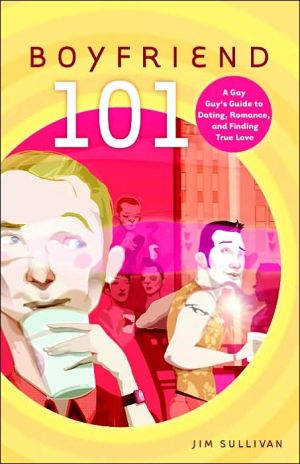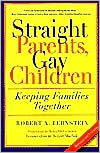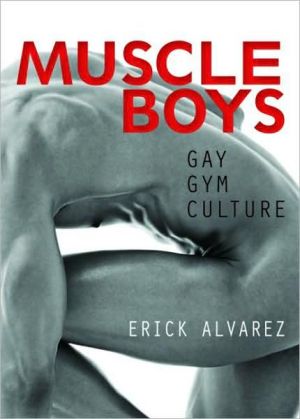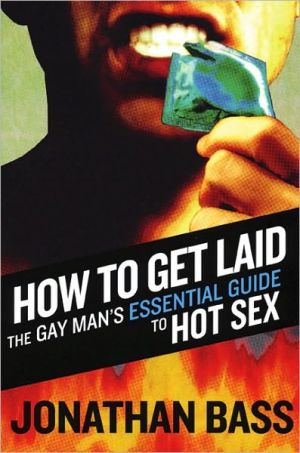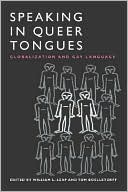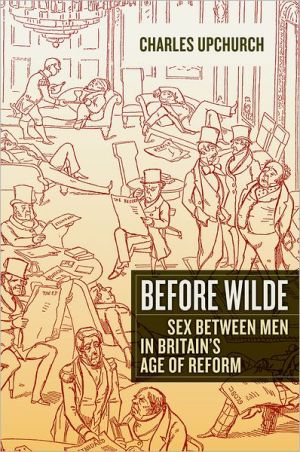Boyfriend 101: A Gay Guy's Guide to Dating, Romance, and Finding True Love
You’ve done the bar thing. You’ve let your best friend set you up. You’ve even logged on to a gay dating website. But the man of your dreams is still out there, just waiting for you to find him. What’s a gay guy to do? Look no further than this book.\ Whether you’re new to the dating scene or just wanting a refresher course, in Boyfriend 101 you’ll find an abundance of practical tips for meeting the right man (and avoiding the wrong ones) and keeping him (and you) interested for the long...
Search in google:
You've done the bar thing. You've let your best friend set you up. You've even logged on to a gay dating website. But the man of your dreams is still out there, just waiting for you to find him. What's a gay guy to do? Look no further than this book. Publishers Weekly Professional counselor Sullivan supplements his breezy advice with anecdotes from his clients to coach gay readers looking for Mr. Right. As the "101" title implies, this is a beginner's guide with Sullivan starting at the ground level ("What is a date?"). His baby-steps approach covers potential opening lines for small talk with strangers; a three-page list of qualities to help narrow the focus of what your Mr. Right needs to possess; and locations for running into eligible men. Sullivan's banal scripted "one-minute encounters" should encourage even the most tongue-tied that it doesn't take clever observations to open a conversation. Some of Sullivan's advice seems so rudimentary that it seems designed for shut-ins rather than someone new to gay dating. One of the things not to say on a first date is "My father was a drunk," while Sullivan says men like to hear "Your butt is awesome," "I'm so proud of you" and "You make fabulous coffee." Sullivan's advice is more constructive when dealing with relationships: dating someone with a different HIV status; integrating your "inner teenager"; working through internalized homophobia; and suggested communication strategies for couples. The book ends with a useful resource guide that lists online matchmaking services, gay organization links and reference directories Copyright 2003 Reed Business Information.
CHAPTER 1\ getting started\ \ From the early days of Gay Liberation until the early 1980s, the primary place for meeting gay singles was bars. The bar scene was the hub of gay life. In bars, men dished, met new friends, fell in love, and broke up. Every gay traveler carried the Damron Address Book, the bible of gay travel. With the onset of AIDS in the early eighties, the golden age of bars ended. Suddenly, there were vastly more important things to do—ministering to others; taking care of one’s own health—than hanging out in bars. With the decreasing importance of bars in the culture, new ways of relating emerged, as gay men sought alternatives to bars as places to socialize and to shelter themselves from the storm outside.\ By the early 1990s, dating patterns for gay men had undergone a profound change. Previously, men met and either fell in love at first sight and became lovers fairly quickly, or had sex and, if it didn’t work out, moved on. One rarely heard—let alone used—the “D” word. It sounded too straight. It took too much time. The expectation of immediately having sex with a man was so ingrained in gay culture that the idea of postponing what was only “natural” seemed old-fashioned and sex-phobic. To be gay was to have sex. Now.\ The ritual of dating became a new phenomenon. New organizations sprang up across the United States, and gay community centers became an alternative hub of gay life, where one could meet other gay singles in a non-bar environment. Many men rubbed elbows with lesbians for the first time at gay centers, and experienced firsthand another model of same-sex coupling. Few lesbians were looking for the absolutely “perfect” body as much as gay men—or for immediate gratification.\ Some men recoiled at the concept of dating, because they were afraid of intimacy—and still held on to the myth that the pre-AIDS period of sexual experimentation constituted the glory years. But those days are gone forever. The paradigm shift from bars, cruising, and immediate sex to dating, courtship, and long-term relationships defines today’s gay landscape.\ WHAT IS A DATE?\ You’re having a date when you meet a guy at a specified place and time in pursuit of the possibility of future romantic involvement. The operative words are possibility and future; throw the notion of immediate gratification out the window, because delayed gratification is part of the new paradigm.\ Gay “dating” in the past was about immediacy, quickness, get-in-and-get-out, secrecy, fuck buddies, no commitments—there was always an exit. In no way do I condemn these patterns. Many gay men seized these opportunities as a means to explore their sexuality and to resist the heterosexist norms that had repressed them. No gay men wanted to be told what to do in bed or out of it.\ The paradigm shift brought to gay singles the challenge of a new approach to intimacy. Learning how to date men, rather than just have sex with them, includes acknowledging and accessing what I call our “inner teenager.” The inner teenager is the playful, shy, sexy, seductive, self-conscious, scared, and romantic part of us that wants to go out on dates, but may not possess the social and emotional skills to do it. There’s a negative side to the inner teenager as well—the inner voices of temper tantrums. The adult part of us—the grown-up who can operate quite efficiently in the world—needs to take care of his inner teenager, or the inner teenager will rebel and make his life miserable.\ Our inner teenager can make our career and work life seem like a death sentence if his needs don’t get met. The inner teenager wants to come out and play, and requires the adult part of us to mentor him through the process. The inner teenager has a “dark” side that can tyrannize us and prompt us to act out on impulse.\ Below are the voices of the inner teenager and—with mature responses—his adult:\ teenager: I’m afraid of asking him out.\ adult: I’m going to call him this evening after work.\ The inner teenager may appear cocky on the outside, but deep down inside he may lack the confidence and the social skills to ask a man out on a date. The inner teenager mumbles, fumbles, and makes everything a big deal. Being turned down becomes catastrophic.\ Teenagers live with a heightened sense of reality; for them, everything is either “totally cool” or “totally bad.” Adults need to provide balance, security, and perspective, and to de-escalate from all-or-nothing thinking. While the inner teenager is scared, the adult will show him that actions can be taken in spite of fear.\ As an adult, you should find a comfortable place to make the call for a date: take a deep breath, dial the phone, and ask your guy out. Your inner teenager will be enormously appreciative!\ teenager: I want to get into shape.\ adult: I’m going to watch my diet. I’m going to start working out, at least three times a week.\ Teenagers can be undisciplined, so they need a lot of structure. A teenager may have a desire to get into shape, but McDonald’s and Taco Bell may get in the way. Though the teenager may want to be king of the world, he is also very self-conscious about his body. The mature adult puts together a plan to get into shape, and sticks to it. The goal is to look great, on your own terms, so that your inner teenager can show off his body with confidence and pride.\ teenager: I’m scared he won’t like me.\ adult: I have a lot to offer him. I’m bringing a lot to the dating table.\ The inner teenager is afraid of rejection. He wants to feel included and to have a sense of belonging. He feels all eyes are on him and doesn’t want to “mess up.” The adult in each single man must appreciate and acknowledge his assets and, like a peacock, strut his stuff to the world. The adult feels secure enough in himself not to take each rejection as a referendum on his value as a person.
\ Publishers WeeklyProfessional counselor Sullivan supplements his breezy advice with anecdotes from his clients to coach gay readers looking for Mr. Right. As the "101" title implies, this is a beginner's guide with Sullivan starting at the ground level ("What is a date?"). His baby-steps approach covers potential opening lines for small talk with strangers; a three-page list of qualities to help narrow the focus of what your Mr. Right needs to possess; and locations for running into eligible men. Sullivan's banal scripted "one-minute encounters" should encourage even the most tongue-tied that it doesn't take clever observations to open a conversation. Some of Sullivan's advice seems so rudimentary that it seems designed for shut-ins rather than someone new to gay dating. One of the things not to say on a first date is "My father was a drunk," while Sullivan says men like to hear "Your butt is awesome," "I'm so proud of you" and "You make fabulous coffee." Sullivan's advice is more constructive when dealing with relationships: dating someone with a different HIV status; integrating your "inner teenager"; working through internalized homophobia; and suggested communication strategies for couples. The book ends with a useful resource guide that lists online matchmaking services, gay organization links and reference directories Copyright 2003 Reed Business Information.\ \ \ \ \ Library Journal"Dating is not rocket science," writes first-time author Sullivan, a self-described dating and relationship coach, "[but] a skill that can be taught." This encouraging, goal-oriented guidebook to interpersonal interactions will help men take advantage of their strengths, find suitable (and cute) mates, have safer sex, and achieve diversity. Sullivan combines practical advice-"Be conscious and careful of whom you have sex with, and of the emotional consequences"-with upbeat encouragement-"God gave you a brain: use it!" Readers will appreciate straightforward, by-the-numbers material (e.g., sample personal ads) that leaves room for creativity and personal flair. Much like Neil Kaminsky's Affirmative Gay Relationships, this is solid, instructive, and reasonably priced, though at times overly dependent on anecdotes to demonstrate points and provide advice. Either book is fine for most libraries. Copyright 2003 Reed Business Information.\ \
